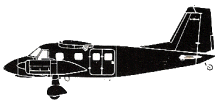Incident Overview

Description
Emirates flight EK957, a Boeing 777-300ER aircraft, departed Dubai International Airport (OMDB), the United Arab Emirates for a scheduled passenger flight number EK957, to Beirut International Airport (OLBA), Lebanon. There were 64 people onboard: 2 flight crewmembers, 12 cabin crewmembers, and 50 passengers. After entering Nicosia flight information region (LCCC FIR), Cyprus, during descent, the aircraft encountered moderate to severe air turbulence that lasted for approximately three minutes. The turbulence caused injuries to seven occupants. The en route significant weather chart (SIGWX) contained in the operational flight plan (OFP) forecasted occasional isolated embedded cumulonimbus (CB) clouds affecting Nicosia FIR and Beirut FIR (OLBB). The OFP did not contain any significant meteorological information (SIGMET). During the preflight briefing, the commander alerted the cabin crew about the possibility of in-flight turbulence during the descent to OLBA. On 17 January 2021, Larnaca International Airport (LCLK) meteorological watch office (MWO) issued several SIGMET of thunderstorms and severe turbulence affecting areas within LCCC FIR. The flight crew were not aware of the SIGMET issued by LCLK when the aircraft entered LCCC FIR. With the aircraft at the top of descent (at FL360 within LCCC FIR), the commander, who was the pilot flying (PF), instructed the cabin crew to secure the cabin as he anticipated turbulence during descent and switched the seatbelt sign to ON. About three minutes into descent, at approximately 0804 UTC with the aircraft passing pressure altitude 29,200 ft, the aircraft started to encounter turbulence. The Copilot immediately made a passenger announcement for cabin crew to take their seats. Soon after, the aircraft encountered moderate to severe air turbulence. The flight crew believed the turbulence was ?clear air turbulence? because there was no weather radar returns of precipitation displayed on the navigation display. During the turbulence, the aircraft autopilot and autothrottle remained engaged and the aircraft remained inside its flight envelope. The turbulence-generated acceleration forces caused several unsecured cabin crewmembers and passengers to be forcefully lifted off their feet and impact cabin furnishings resulting in a serious injury to one passenger. There was no reported damage to the aircraft cabin. The flight continued to the destination where the aircraft landed uneventfully. Causes The Air Accident Investigation Sector determines that the cause of the Accident was the significant vertical g-forces imposed on the Aircraft because of severe clear air turbulence, which caused an unsecured passenger to be forcefully lifted off her feet and impact cabin furnishings resulting in her right foot fracture serious injury. Contributory Factors (a) The influence of the jet stream and thunderstorm in the flight path area was significant enough to produce severe turbulence. (b) The flight crew decision making lacked critical information contained in SIGMET 3 issued by LCLK MWO (covering the period from 0530 to 0930) which forecasted severe turbulence between FL260 and FL390, south of latitude N3430. (c) The format of the SIGMET issued by LCLK MWO was different from the recommendations contained in ICAO Annex 3 and EU regulation No. 2020/469 such that the Weather Services International Fusion application (WSI Fusion) applied by the Operator?s flight dispatch department did not generate a timely alert for SIGMET 3 report issued by LCLK MWO.
Primary Cause
Significant vertical g-forces imposed by severe clear air turbulence, leading to an unsecured passenger being forcefully lifted off their feet and impact cabin furnishings.Significant vertical g-forces imposed by severe clear air turbulence, leading to an unsecured passenger being forcefully lifted off their feet and impact cabin furnishings.Share on:



